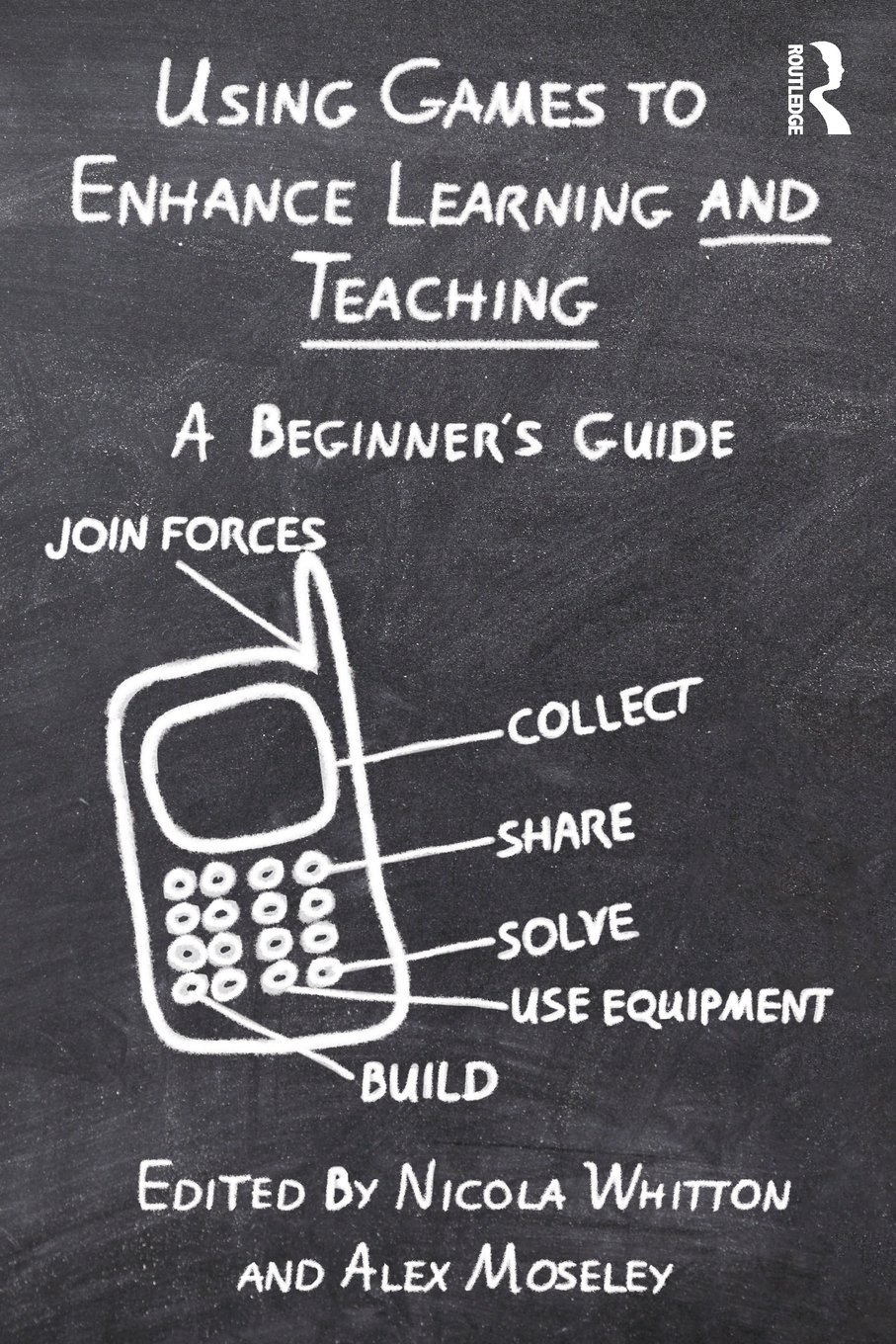


Play the game!
Maximising the impact of training games

GUIDELINES FOR TRAINERS TO ENSURE MAXIMUM BENEFIT FROM USING TRAINING GAMES
Be clear about the purpose of the game, particularly about the skills and behaviours that it is designed to develop. Try to reduce any unnecessary �clutter� and extraneous rules that have no bearing on the development of the relevant skills.
Provide a clear explanation to participants. This will probably include the aim of the game, any restraints or �rules�, the time available and hints about preferred strategies to adopt. It may also be appropriate to advise participants about how they might feel � especially where they are likely to experience frustration or conflict. (It is useful if the trainer has actually experienced the game as a participant.)
Provide opportunity for reticent trainees to opt out or undertake a different role (as observer, monitor or assistant game administrator).
Try to anticipate problems and difficulties, some of which can be minimised by including additional rules. It is a good idea to �test run� a new game with a group of colleagues in order to ascertain such difficulties.
Once the game is under way, it is essential that the trainer acts assertively, both in applying the rules of the game and in dealing with any unexpected eventualities. Creative participants will invariably find �shortcuts� or a way to �cheat� and the trainer must be ready to make an instant decision about what to allow. In the advent of an unanticipated �creative solution� it is natural to feel threatened and to respond negatively, but it is important to remind yourself of the purpose of the game and judge whether the innovation is a genuine attempt to achieve the objective of the game.
Be flexible. Sometimes a game can take an unexpected twist that actually adds value to the learning inherent in the situation. It is important not to negate this by applying the rules too rigorously. The trainer has to achieve a difficult balancing act between controlling the game and allowing sufficient leeway for it to develop.
Ensure that the aim of the exercise is achievable (and within the time available).
Give careful consideration to the amount of time that may be required. An exercise that one group completes in ten minutes may take another group half an hour.
Remember that the debriefing is probably the most important part of the exercise and needs to be carefully managed. It may be necessary to establish a number of ground rules, especially where participants will be examining each other�s contribution to the achievement of a group objective. It may also be appropriate, if the nature of the exercise has involved working closely with others, to consider participants� emotional reactions and whether these need to be diffused.
Devising effective training games requires some skill and should not be viewed as an easy option. Nevertheless, the amount of effort required to design, test and amend a training activity can be more than repaid by the effectiveness of the outcome.
Imagine the scene. Eight people of both sexes and various ages sit around a table. Each is blindfolded. Each nervously fingers two or three shaped pieces on the table in front of them. One of them mutters beneath his breath something about crescent moons and animal horns. Tentatively, another holds aloft one of her pieces, shaped somewhat like an Egyptian ankh. �What colour is this?� she asks.
Although it may at first appear to be some strange mystic ritual, in fact the group is taking part in a training game and, within minutes, is actively engaged in solving the problem of the missing pieces. This particular game, entitled �Colourblind�, is designed to develop communication, problem-solving, planning and team-working skills. Half an hour later, having achieved their objective and correctly identified the missing pieces from a fairly complex set, the learning continues as the group sets about discussing how it developed a common vocabulary, the emergence of leadership within the group and how its members might have improved their strategy. This debrief inevitably lasts longer than the task, demonstrating the effectiveness of the game as a stimulating learning tool.
SO WHAT IS IT THAT MAKES TRAINING GAMES WORK SO WELL?
Primarily, a well-designed training game engages the emotions insofar as participants are actively involved in achieving a pre-set objective, no matter how frivolous that might at first appear. The cagey and the cautious (and even the downright antagonistic) cannot help but become involve as the rest of the group warm to the task. Whatever the initial level of commitment, most participants recognise that they have a contribution to make and rapidly become immersed in achieving the group objective. Because they can be a miniature representation of reality, games can generate real issues of concern, such as poor communication skills, inappropriate behaviours, poor interpersonal skills, and so on. Nevertheless, because these arise within the context of the game, participants feel less apprehensive about confronting them. The accomplished facilitator can usually broach these issues in a way that leaves participants� self-esteem intact.
Another factor that contributes to the effectiveness of training games is that the learning is �owned� by the participants. Although the trainer may have specific reasons for including a particular game in a training session, often the most important lessons derived from the experience of playing the game are generated by the participants themselves. This potential for diversity should not be seen as a threat by trainers but as a major strength of the genre. Another strength of training games is that they suit all types of learning style. Indeed, one would hardly expect it to be otherwise, as the well-designed game will be based on Kolb�s learning cycle, which focuses on having an experience, then reflecting, theorising and applying the learning inherent in that initial activity.
Games, or similar light-hearted activities can also be used as effective ice-breakers. In this instance, the facilitator needs to take account of how well group members know each other (if at all); how easily they can be persuaded to take part; how comfortable they will feel participating; what their initial responses to the activity might be; and whether there is a purpose to the exercise. At the beginning of a day, flung together with a group of people you have never met before, you do not want to be crawling around on the floor making animal noises � even if it will help to �break down your inhibitions and help you get to know one another�.
Of course, we have all heard our fair share of �horror stories� relating to training games: unwilling participants being forced into embarrassing situations; disgruntled group members �switching off�; sensitive trainees being left in tears; and worse. Most of us have experienced being �jollied along� or cajoled into something with which we were not comfortable. This serves no useful purpose and can serve to alienate trainees. Trainers need to remember that some participants will be a little reticent and should provide opportunity to opt out: most games will benefit from having an impartial observer or two who can bring a different dimension to the debriefing discussion. To be most effective, observers should be provided with a summary of the behaviours they are looking for: a simple matter for the well-prepared trainer.
The following is an example of a simple ten minute activity that contains a powerful message about continuous improvement.
Participants stand in a fairly large, open circle. The trainer gives a juggling ball or a tennis ball to one and asks this person to throw it to someone else in the circle, remembering to whom they threw it. Each new recipient in turn is asked to throw the ball to one of the others in the circle (who has not yet received the ball), until everyone in the circle has handled the ball. After this practice-run, the group is asked to repeat the exercise (throwing the ball in the same order) while the trainer surreptitiously times the process. The trainer announces the time and encourages the group to think of one minor improvement that will enable them to complete the exercise more efficiently. Acting on the first suggestion (such as moving closer or passing rather than throwing), the group repeat the exercise � invariably completing it in a shorter time. Stimulated by their success, the group is encouraged to make another minor improvement � and another � and another � each time reducing the time taken. Ultimately, to their astonishment, most groups manage to reduce their time to only a few seconds! Messages about continuous improvement hardly need emphasising after such a positive experience.

The following websites may be useful starting points for your enquiries about the use of games in training:
Another simple game that focuses on problem-solving and team-working involves up to a dozen participants. Ideally, this suits a team who are used to working together. It requires sufficient space for participants to move about freely. Prior to starting, trainees should be briefed that they will be required to wear a blindfold for the duration of the activity (about 5 � 10 minutes). Anyone who feels uncomfortable about this can act as an observer / safety-monitor (to ensure that nobody comes to any harm during the exercise).
Each playing participant is secretly given a number, which they may not tell to anyone else. After familiarising themselves with the playing space, they don their blindfolds, whereupon the aim of the exercise is explained. The aim is simply for the group to arrange themselves in numerical order. The only rule is that no-one may speak (or sing or make any other vocal sound).
It is interesting to observe how several strategies (such as drawing on hands, holding up fingers, tapping shoulders or clapping) emerge simultaneously and how consensus is reached. The exercise typically takes as many minutes as there are participants. Debriefing the exercise, and the discussion that ensues, usually last considerably longer.

Using Games to Enhance Learning & Teaching: A Beginner's Guide
Eds: Nicola Whitton & Alex Moseley
New Traditional Games for Learning: A Case Book
Eds: Alex Moseley & Nicola Whitton